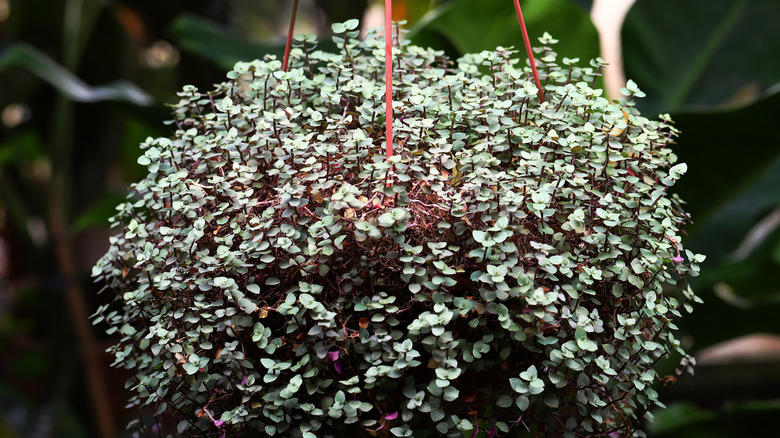The Vining Houseplant That Can Thrive Even In Low-Light Areas
Vining houseplants can be amazing additions to your home's interior decor. They are highly versatile in their growth habits, which makes them suitable for a number of different locations, such as shelves, containers, or windows. Meanwhile, their trailing nature is not just a lovely sight to behold but is also highly space-efficient. Turtle vine (Callisia repens) is one such fast-growing houseplant that can also thrive in low light. This tropical succulent doesn't just look highly attractive in containers and pots, but it's also extremely forgiving when it comes to maintenance requirements.
Also known as the creeping inch-plant, turtle vine is highly adaptable to growing indoors. Although the plant is native to hot, tropical climates, it does not like being placed in direct sunlight, since it runs the risk of getting scorched. Ideally, you should place the turtle vine in indirect, bright sunlight. Keep in mind that even though these trailing beauties prefer partial shade, they can also suffer from lack of light, which can cause their stems to be leggy. Aside from that, some cultivars can also lose their variegated patterns on the leaves if you do not give them the six hours of light they prefer. Given this confusion regarding exactly how much light this low-light houseplant actually needs, it is best to keep your turtle vine near an east-facing window. This will save them from the scorching afternoon sun, while also providing them with enough indirect light to grow optimally.
Tips for growing the turtle vine in low-light conditions
Native to the shady, rocky regions of sub-tropical South America, the turtle vine is perfectly capable of thriving inside homes as an ornamental houseplant. You can make use of their cascading growth pattern to create beautiful hanging baskets inside living rooms, or have them draped over pots in an indoor container garden, where they will complement taller, more dramatic flowers. When caring for your turtle vine, if you notice the color of the leaves getting pale or pests like aphids appearing on the plant, adjust their position so that they receive a bit more light. On the other hand, brown or yellow patches on the leaves mean that your plant is getting scorched from too much sun.
Another way to get the lighting perfect for your turtle vine is to use a sheer curtain to diffuse sunlight. You can also use grow lights during winter if you're having issues with giving the plant enough natural light. Grown indoors, you should maintain a temperature between 60 to 80 degrees Fahrenheit for your turtle vine. When it comes to humidity levels, these plants prefer a dry environment. Keeping the humidity low also makes sure the plant will not develop too many diseases. As a common ground cover plant that's not worth putting in your yard due to its toxic flowers, stems, leaves, and sap, turtle vine is best kept out of reach of children and pets.

